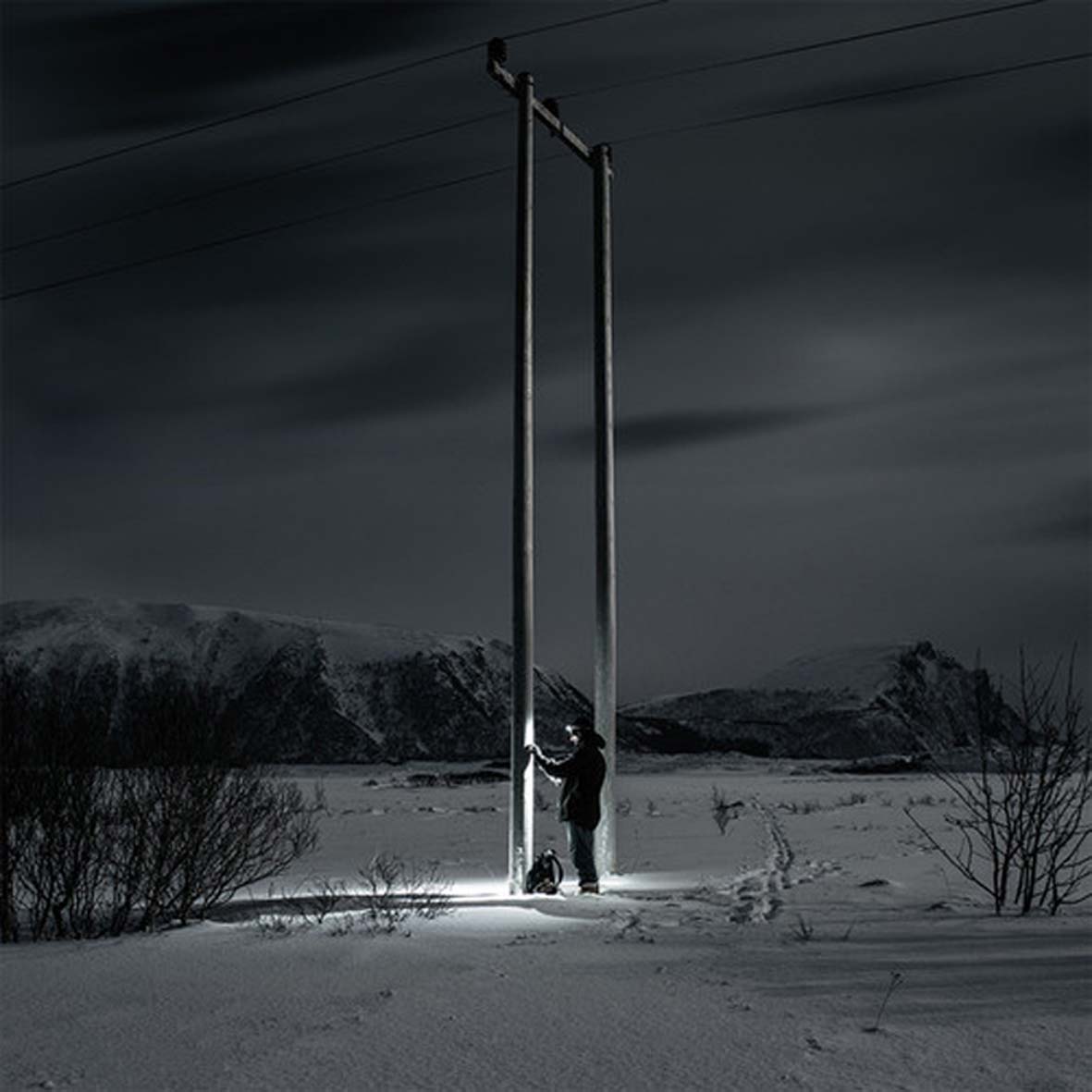 There has been an unusual amount of excitement about this debut and for good reason: Eric Holm takes a very cool and inspired idea and executes it beautifully.  Culled entirely from contact mic recordings that Holm made from remote telephone poles used by military listening stations in the Arctic Circle, Andøya is an unexpectedly rhythmic and haunting series of meticulously crafted industrial soundscapes that occasionally blur into weird minimalist techno.
There has been an unusual amount of excitement about this debut and for good reason: Eric Holm takes a very cool and inspired idea and executes it beautifully.  Culled entirely from contact mic recordings that Holm made from remote telephone poles used by military listening stations in the Arctic Circle, Andøya is an unexpectedly rhythmic and haunting series of meticulously crafted industrial soundscapes that occasionally blur into weird minimalist techno.
It goes without saying that unusual sound sources are hardly groundbreaking in today's experimental music landscape, but seeing them combined with a healthy amount of imagination and compositional talent is a legitimate rarity.  In most other hands, these pops, hums, and crackles would have been turned been into straightforward field recordings, academic-sounding sound art, or recognizability-obliterating noise.  To his credit, Eric has proven that he has the talent and vision needed to join the ranks of folks like Matmos and Klara Lewis in figuring out how to twist very non-musical sounds into structured, compelling music.
Holm is at his best when strongly emphasizes the machine-like rhythms of his recordings, as he does in the stellar opener Måtinden.  I suspect Holm must have encountered a particularly virtuosic and multitalented telephone pole for that piece, as the murky sub-bass thrum, repeating thumps, crackles, hisses, and shudders do not just combine to approximate minimalist techno–they combine to approximate quite complex minimalist techno.  Equally impressive is the fact that Holm manages to keep the piece compelling for almost 10 minutes simply by deftly fading components in and out. While Eric repeats that general template a couple more times over the course of Andøya (he has an extremely constrictive palette), he still manages to vary the pace and atmosphere enough to make pieces like the slow and echo-heavy "Stave" and the propulsively rumbling bassquake of "Kvastinden" seem similarly distinctive and striking.
The remaining three pieces, however, are a bit more abstract.  "Åse," for example, is built upon an insistent stuttering buzz punctuated by echoing scrapes.  "Høyvika," on the other hand, sounds like minimalist techno that has been deconstructed and abstracted into a murky miasma of fits-and-starts and hollowly echoing clatters and shudders.  The final piece, the titular "Andøya," is probably the most abstract of all, cohering into a pulsing sub-bass drone embellished with eerie metallic whines and dissonantly harmonizing hums.  While I personally prefer the more rhythmic pieces on the album, the more atmospheric pieces do not display any significant drop in quality.  I just happen to prefer experimental sound art with hooks to experimental sound art without them.
Aside from the excellent concept and massive amount of skillful editing involved in crafting Andøya, I also loved the sounds themselves: the telephone poles deserve some credit too.  Though knowing the origin of these sounds undeniably affects my perception of the album, I think Andøya's coldly inhuman array of buzzes, throbs, and clicks would have had no problem evoking scenes of paranoia and isolation even without their backstory.  Also, in a more specific sense, I loved that Eric used so many buzzing and throbbing low frequencies near the threshold of hearing.  That enhances the sense of mystery a lot for me, as it frequently feels like deep, elemental forces are cohering into something on their own rather than being shaped by some guy with an expensive laptop.  I am definitely the target demographic for sonic illusions, intentional or otherwise.
Obviously, an album like this is going to have niche appeal at best, but I think Andøya is intermittently great enough and musical enough to potentially lure in some adventurous listeners from beyond the sound art/experimental music communities.  I sincerely hope it does, as it deserves to be heard.  Also, I would very much love to live in a world where the reigning club banger of the summer was unwittingly penned by a telephone pole on a mountainous Arctic island.
 
Read More

